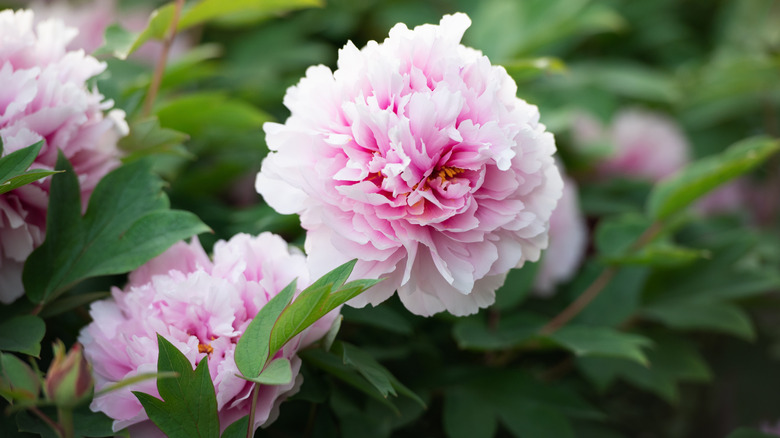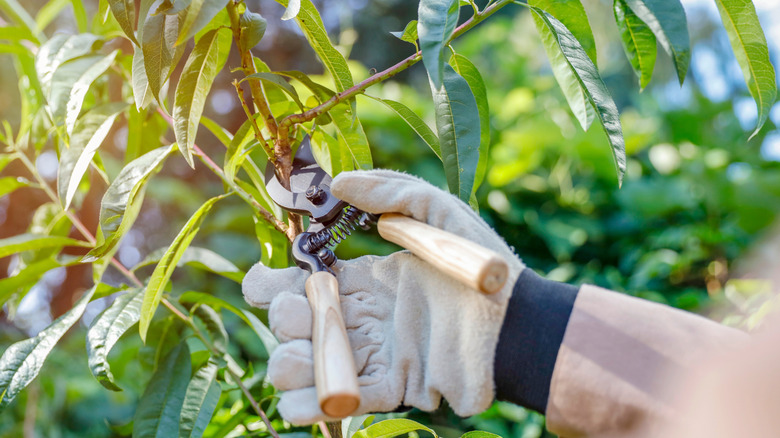The Best Time Of Year To Prune Peonies, And How To Do It
We may receive a commission on purchases made from links.
When you think of gardening, pruning, and abundant flowers, you probably also think of spring. But while April showers bring May flowers, fall pruning brings premium peonies. There are two types of peonies — herbaceous peonies (Paeonia lactiflora) and tree peonies (Paeonia suffruticosa, among others) . Though the flowers look similar, you should know what version you have to give proper care for peonies in the fall. Tree peonies have thicker, woodier stems and do not require trimming and pruning, as they (like other trees) drop their leaves before winter.
Herbaceous peonies, however, will need a bit more attention. After the first frost of the fall, you will want to trim them between ground level and 3 inches high. Trim the stems at a 45-degree angle, and use sharp nippers to make the cuts clean and easy. Since they are perennials, they will come back the next year, and this will help to ensure that they grow to their fullest potential.
Trimming these herbaceous perennials in the fall will make sure that your gorgeous flowers are in tip-top shape when they bloom. After you prune them back, you will also want to be sure to remove any debris as it keeps the ground healthy and prevents disease or decay from affecting your plants.
The key to thriving peonies
Besides a seasonal pruning, there are some other tips that can help you grow peonies to their fullest potential. While you will want to prune your established plants in the fall, that is also when you should plant new ones as they prefer a cooler climate. Alternatively, you can also plant them in the spring. Herbaceous peonies are full-sun flowers, so when choosing where to plant them, ideally place them so that they won't be shaded at any point of the day. While they can grow in some shade, they won't produce as many flowers.
These plants also require some personal space, so be sure to separate them by about 2 to 3 feet between each one so that they have room to grow. If you are starting with a new bulb, soak the roots in warm water 30 minutes before planting. Then in a 15-inch deep hole, place the bulb so that the top is covered with 1 to 2 inches of soil.
Watering can be tricky. You want to make sure that they are receiving enough water, especially newer plants, but they also need to have proper drainage so as not to flood the roots or cause rot. If you live somewhere with a heavy or clay-laden soil, you can add compost to make it lighter and more sandy. Finally, make sure that you create a deep and wide hole for the plants — the top of the root should be covered between a ½ inch and 2 inches of soil — with colder climates aiming for the deeper end of that range.

